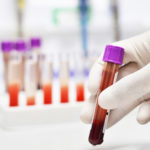Prostate Cancer

What is prostate cancer?
The prostate gland is found only in males. It is about the size of a walnut and sits just below the bladder in front of the rectum. The urethra (the tube that carries urine from the bladder) runs through the prostate. The role of the prostate gland is to manufacture a fluid that is part of the semen (the fluid that contains sperm).
Prostate cancer is the second most common cause of cancer deaths among men. According to the American Cancer Society, an estimated 288,300 new cases will be diagnosed in 2023. The risk of developing prostate cancer increases significantly after the age of 65.
Prostate cancer is typically a slow-growing cancer. Many patients with prostate cancer live much longer than five years after diagnosis. In fact, almost 90 percent of men with prostate cancer live at least five years, and 63 percent survive more than 10 years. If the cancer is detected before it has spread to other organs, the five-year relative survival rate is 100 percent. However, if the cancer has spread to distant parts of the body, the five-year survival rate drops to 31 percent.
What are the causes of prostate cancer?
Scientists have estimated that lifestyle factors account for about 75 percent of advanced prostate cancer cases, and of all the environmental variables, diet appears to be the most influential. Like breast cancer, prostate cancer is particularly sensitive to factors that influence hormone levels.
Concern that vasectomy may increase the risk of prostate cancer stems from the conflicting results of a number of studies. The studies that started the controversy were published in 1993, and reported that men who underwent vasectomy had a very small – 1.5 percent – increase in risk. Another large study compared 753 men with prostate cancer to 703 men who didn’t have the disease. After adjusting for age, race (African Americans have twice the risk of whites) and family history of the disease, they found that among those with prostate cancer 39.4 had vasectomies compared with 37.7 percent of those who didn’t have cancer. Such a small difference suggests that there is likely no direct association between vasectomy and prostate cancer. In addition, more recent results from large prospective cohort studies do not support associations of vasectomy with either prostate cancer incidence or prostate cancer mortality.
Who is likely to get it?
The older you are, the more likely you are to be diagnosed with prostate cancer. Although only 1 in 10,000 under age 40 will be diagnosed, the rate shoots up to 1 in 38 for ages 40 to 59, and 1 in 14 for ages 60 to 69. The majority of all prostate cancers are diagnosed in men older than 65.
Ethnicity and heredity are important factors, as well. African American men are 61% more likely to develop prostate cancer compared with Caucasian men and are about 2.5 times as likely to die from prostate cancer. Men with a father, brother or son with a history of prostate cancer are two times as likely to develop prostate cancer themselves, and men with two or more relatives with the disease are nearly four times as likely to get prostate cancer. The risk is even greater if the affected family members were diagnosed at a young age, and the highest cancer risk seen is in men whose family members developed prostate cancer before age 60.
Although genetics unquestionably have some influence, diet and lifestyle also play a role. A healthy diet might help decrease the chances of developing prostate cancer, reduce the likelihood of recurrence, or aid in slowing the cancer’s growth.
What are the symptoms?
- Frequent urges to urinate, especially at night;
- Difficulty starting urination or holding it back;
- Weak or interrupted urinary flow;
- Painful or burning urination;
- Erectile dysfunction;
- Painful ejaculation;
- Blood in urine or semen; or
- Recurrent, persistent pain or stiffness in the lower back, hips, or upper thighs.
Are there prostate cancer screening tests available?
Although checking PSA levels is not an ideal screening test, many cases of prostate cancer are discovered during routine blood work that reveals an elevated PSA level. In addition, a digital rectal exam can help detect physical irregularities in the prostate that signal the possibility of cancer. In both cases, physicians will recommend a biopsy to complete the diagnosis.
The Biopsy
During a biopsy, needles are inserted through the rectum into the prostate to take tiny specimens of tissue. The biopsy procedure may cause some discomfort or pain, but the procedure is short, and can usually be done as an outpatient.
Gleason Grading and Gleason Scores
Cancer cells have a distinct appearance, and the degree to which they vary from normal cells is what determines the cancer grade. “Low-grade” tumor cells appear much like normal cells, and “high-grade” tumor cells look markedly different.
The Gleason grading system accounts for the differing patterns that prostate tumor cells may take in their changed appearance from normal cells. “1” characterizes cells that are very nearly normal, and “5” represents cells that do not appear at all like normal prostate cells. Most prostate cancers contain cells that are different grades. After examining the cells, the pathologist looking at the biopsy sample gives a Gleason grade to the most typically occurring pattern, and a second Gleason grade to the next most common pattern The two grades are summed together and the Gleason score is found.
The Gleason score usually predicts the aggressiveness of the disease and how it will progress. The higher the Gleason score, the less the cells behave like normal cells, and the more likely the cancer is to spread. Currently the lowest score assigned to a tumor pattern is grade 3. Grades below 3 indicate normal to near normal cells. When adding the two most prevalent grades of cells a Gleason score of “6” is considered low grade cancer, “7” is intermediate grade, and a score of “8” to “10” is classified as high-grade cancer.
Staging the Disease
Staging classifies the extent of prostate cancer. Localized prostate cancer is found only in the prostate. Locally advanced prostate cancer is when the majority of the cancer is confined within the prostate, but some has started to enter into nearby tissues. In metastatic disease, the prostate cancer is developing outside the prostate and nearby tissues, and possibly to more distant organs.
Many tests can be used to detect the stage of disease. Locally advanced prostate cancer is generally diagnosed through CT scans, MRIs, or X-rays, or through more specific tests, like bone scans.
Metastatic disease can also be found through these imaging studies, and many times can be found in the lymph nodes, as cancers that move to more distant organs generally move through the lymph system. Lymph nodes can be removed in a biopsy or surgery and looked at more closely for the presence of cancer cells.
What is the conventional treatment of prostate cancer?
There is no one correct, conventional treatment for prostate cancer. The options to be considered will depend on the grade and stage of the disease, as well as the age of the patient. In some cases, the best treatment is to do nothing, as the disease may not ever progress outside of the prostate. Consultation with a urologist, a radiation oncologist and a medical oncologist will give the best assessment of the available treatments and likely outcomes.
What therapies does Dr. Weil recommend for prostate cancer?
Recommended Lifestyle Changes
- Exercise. Regular aerobic exercise is associated with a reduced risk of prostate cancer.
- Have regular screenings for prostate cancer. Digital rectal exams can help provide early detection of problems with the prostate gland. Additionally, the PSA test measures a marker of prostate cancer in the blood. The test is not considered conclusive and the usefulness of checking PSA levels to detect cancer or monitor changes in the prostate should be discussed with a physician.
Nutrition and Supplements
- Take a multivitamin that includes vitamin D and antioxidants, especially selenium.
- Eat little to no red meat and saturated fat. Diets high in red meat and saturated fat have been correlated with an increased risk for prostate cancer.
- Eat less dairy. A recent study linked high calcium intake from dairy products to prostate cancer. If you supplement with calcium, or a product that contains calcium, keep your total intake of calcium below 700 mg a day from all sources.
- Eat more vegetables, especially tomatoes and tomato sauce. Lycopene, a carotenoid found in tomatoes and watermelon, has been linked to a lower risk of prostate cancer. Men who ate tomato sauce four times a week had 40 percent lower risk of prostate cancer than men who ate tomato sauce rarely or never in one recent study.
- Include soy foods regularly. Soy foods contain genistein, an isoflavone that helps normalize hormone levels and seems to be linked to a lower risk of prostate cancer.
- Eat more fish. Including fish in your diet at least once a week is associated with a lower risk of prostate cancer.
- Eat more fiber. Fiber helps in the elimination of hormones such as testosterone which influence changes in the prostate.
- Make green tea your beverage of choice. An antioxidant compound in green tea called EGCG kills prostate cancer cells in the test tube. Another compound in green tea blocks the actions of an enzyme that promotes prostate cancer.
How can prostate cancer be prevented?
Results of a study published in the May 27, 2004, issue of the New England Journal of Medicine showed that the routine blood test used for prostate cancer screening misses about 15 percent of all cases, some of which are aggressive enough to be life-threatening. The test looks for a protein (prostate specific antigen, known as PSA) released by prostate cells when cancer is present and as the prostate enlarges. Until results of the study were published, a PSA count under four was believed to indicate that a man was disease-free with reasonable reliability; the higher the PSA count, the more likely the presence of cancer. At present, however, the only reliable way to confirm or rule out cancer is with a biopsy.
Since the study demonstrated that some men with a PSA of “four” or lower may still have cancer, physicians have considered what to recommend. To be safe, some specialists have argued in favor of performing biopsies in all men with a PSA above 2.5; others think there already are too many biopsies being performed, too much unreliable testing and needless treatment of prostate cancers that might never become life-threatening. While prostate cancer can be very aggressive, most tumors grow slowly and the risk of death is low – only three percent. What we need is a better test to distinguish between slow growing tumors that may not require treatment and fast-growing cancer that demands an aggressive approach.
Several methods have been suggested and developed to improve the screening methods for prostate cancer and thus reduce the number of unnecessary biopsies. Adjusting the expected results for the age of the patient and size of the prostate as well as measuring PSA changes over time is a more commonplace strategy. Specialized MRI technology now available in some imaging centers allows a more detailed view of the prostate before considering biopsy. Such studies also aid in targeting the biopsy, if needed, to more accurately sample the area of concern in the gland. In addition, there are now genetic studies for prostatic fluids and for tissues taken at biopsy that can help distinguish the presence of aggressive sub-types. Still, decisions on how to best handle early prostate cancer will remain clouded until more definitive screening tests are developed and perfected.
In the meantime, make sure that you and your doctor are aware of your personal risks. The incidence of prostate cancer increases with age; the disease occurs most frequently among African-American men, those with a family history of the disease, and those whose diets are high in animal fat.
To reduce your risk, follow the supplement and lifestyle recommendations listed above.
Originally posted May 2007. Updated October 2023.









